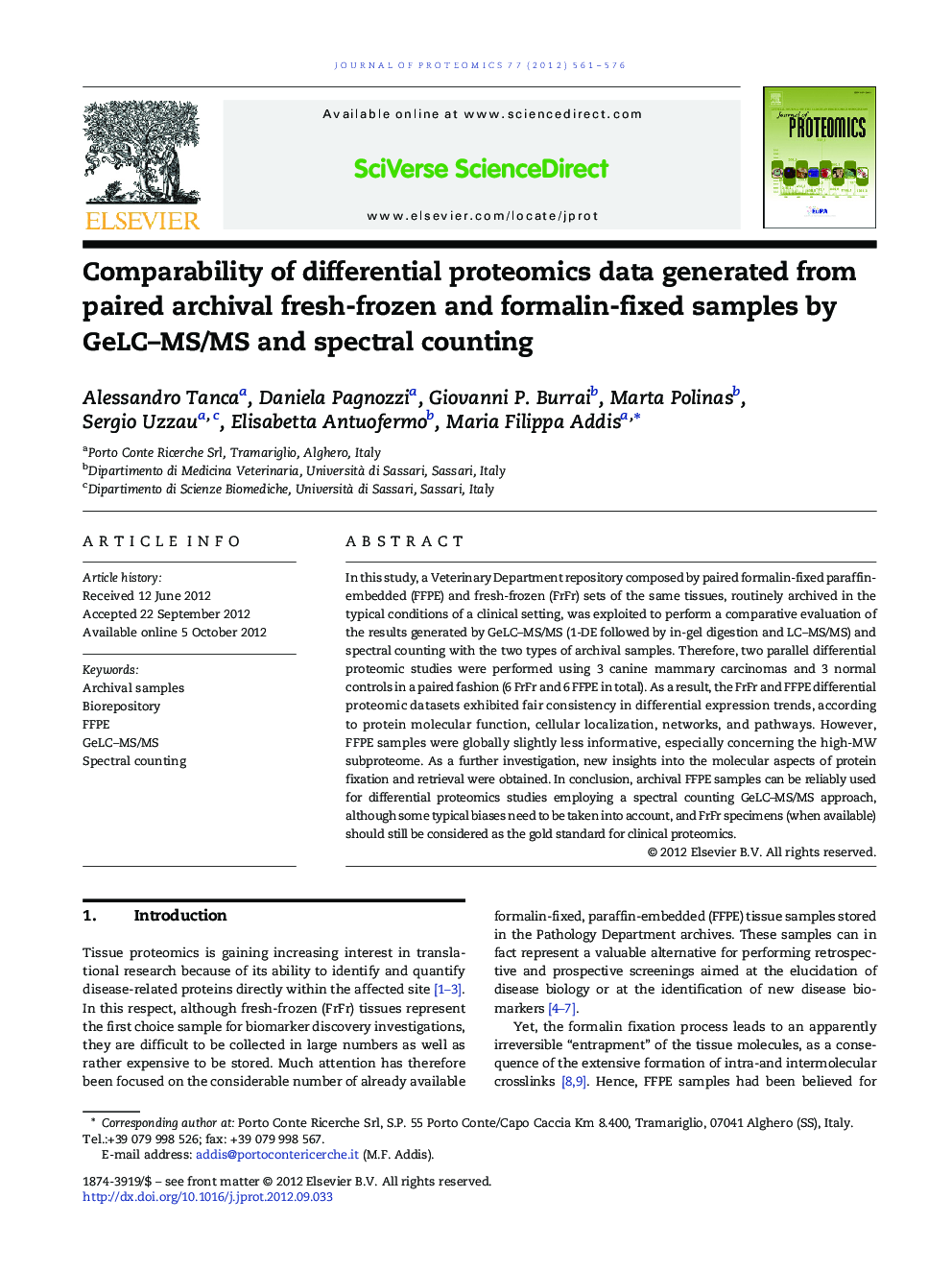| Article ID | Journal | Published Year | Pages | File Type |
|---|---|---|---|---|
| 1226623 | Journal of Proteomics | 2012 | 16 Pages |
In this study, a Veterinary Department repository composed by paired formalin-fixed paraffin-embedded (FFPE) and fresh-frozen (FrFr) sets of the same tissues, routinely archived in the typical conditions of a clinical setting, was exploited to perform a comparative evaluation of the results generated by GeLC–MS/MS (1-DE followed by in-gel digestion and LC–MS/MS) and spectral counting with the two types of archival samples. Therefore, two parallel differential proteomic studies were performed using 3 canine mammary carcinomas and 3 normal controls in a paired fashion (6 FrFr and 6 FFPE in total). As a result, the FrFr and FFPE differential proteomic datasets exhibited fair consistency in differential expression trends, according to protein molecular function, cellular localization, networks, and pathways. However, FFPE samples were globally slightly less informative, especially concerning the high-MW subproteome. As a further investigation, new insights into the molecular aspects of protein fixation and retrieval were obtained. In conclusion, archival FFPE samples can be reliably used for differential proteomics studies employing a spectral counting GeLC–MS/MS approach, although some typical biases need to be taken into account, and FrFr specimens (when available) should still be considered as the gold standard for clinical proteomics.
Graphical abstractFigure optionsDownload full-size imageDownload high-quality image (97 K)Download as PowerPoint slideHighlights► Paired FFPE and frozen tissues provide comparable differential proteomics data. ► The data generated with FFPE and fresh tissues are biologically convergent. ► FFPE samples deliver less complete datasets, mainly concerning high MW proteins. ► When fresh tissues are unavailable, FFPE archives can represent a reliable resource.
